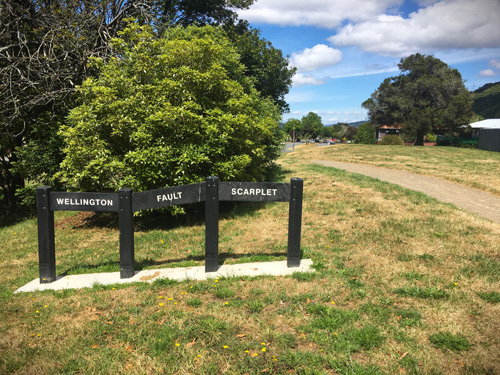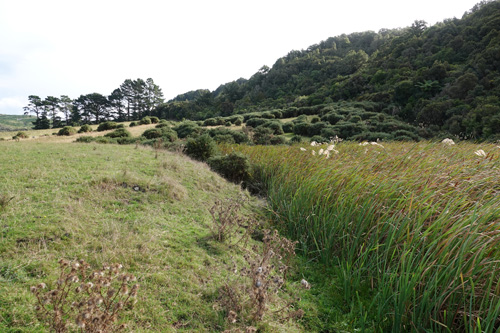1 April 2025—More than half of the earthquakes sampled at the subduction interface at the southern Hikurangi margin in Aotearoa-New Zealand cluster in time with earthquakes on three upper plate faults, according to a new analysis.
The study published in the Bulletin of the Seismological Society of America will help Aotearoa-New Zealand scientists improve their calculations of seismic risk in the region, said Jade Humphrey of the University of Canterbury, Christchurch and colleagues.
“If these faults rupture together or closely spaced in time, they could produce large and potentially destructive earthquakes or earthquake sequences,” said Humphrey. “A first step to incorporating these earthquakes into seismic hazard models is understanding how large, complex and frequent they are.”

Humphrey and colleagues used recalibrated radiocarbon dates and timings for earthquakes drawn from 37 trenches along the Wairarapa, Wellington and Ōhāriu upper plate faults. They compared these data, spanning about 5,500 years, with the timing of magnitude 8 or larger earthquakes on the Hikurangi subduction zone and large historical surface-rupturing earthquakes such as the 1848 magnitude 7.5 Marlborough and 1855 magnitude 8.2 Wairarapa earthquakes.
The research team concluded that either co-rupture or closely timed earthquakes involving the subduction zone and the upper plate occurred more than half of the time, with this linkage most common along the Wairarapa Fault.
While data from historical earthquakes around the world suggest that upper plate and subduction earthquakes could be connected, “with the small sample size it was not clear if these observations are the exception or the norm,” Humphrey noted.
“We were surprised to see that the existing paleo-data appear to show strong evidence for clustering—with potential co-rupture—between earthquake timings on the studied upper-plate faults and the subduction thrust,” she added.
The clusters could represent either co-rupture of faults or earthquakes rupturing in close sequence, the authors note. The exact cause of clustering—such as stress transfer or geometric intersection of faults—is also unclear.

“Earthquake simulators are likely to be a key tool for discriminating between clusters of earthquakes due to multi-fault ruptures and to sequences of earthquakes,” Humphrey suggested. “In combination with historical earthquakes these simulators will help us understand what earthquake complexity is possible and to what extent this complexity relies on the subduction thrust to link the faults together.”
The researchers concluded that there were clusters of surface-rupturing earthquakes that occurred on two or more of the upper-plate faults at 290-270, 880-520, 2300-1825, 3640-2810 and 5170-4855 years ago B.P.
The researchers also estimated the most common recurrence interval for surface-rupturing earthquakes on the upper-plate faults over the past 5,500 years. For the Wairarapa, the recurrence interval was 1418 years, the Wellington interval was 973 years, and the Ōhāriu interval was 1547 years.
Discussions with Māori colleagues are ongoing to find the best way to incorporate traditional oral records to further improve understanding of past earthquakes in the region.
“In Aotearoa-New Zealand traditional records including Mātauranga Māori—knowledge and traditions—and Pūrākau—narrative used to describe natural phenomenon—focus more on the impact of natural phenomena rather than the precise timing of the events,” she said. “Therefore, incorporating traditional oral records will require careful and respectful interpretation.”
